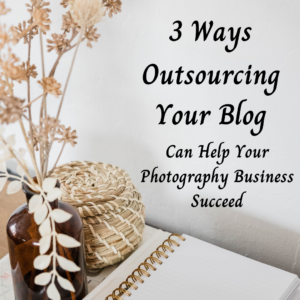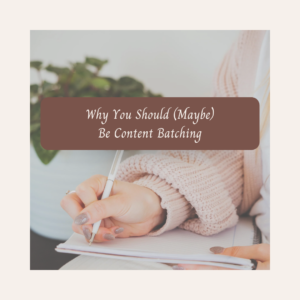I love December. The festivities, holiday preparations, baking, time off…even the music. I know, I know, I’m one of those people. But as much as I enjoy the shakeup to my normal routine, I also know that December can be a season of overwhelm as much as a season of celebration. Money, family relationships, the pressure of trying to make things special, and planning for the upcoming year can all introduce their own emotions and complexities.
One of the best ways I’ve found to deal with overwhelm is (happily) also one of the simplest. Ever heard of the brain dump method?
Google it and you’ll find all kinds of topics related to this, from how to create different dump lists for different areas of your life to cute little printables…in case you don’t know how to make a list, I guess? Hey, if writing it down on something fun and cute helps you, go for it.
But really, the dump method is blessedly easy. Its simplicity and lack of organization is actually what makes it so helpful for me. I have a tendency to freeze up if I try to be too organized at the beginning. I worry that I’m not organizing it correctly. And I inevitably run into those pesky items that could fit into two (or more) categories and get all stressed out about which is the best fit.
How to Use the Brain Dump Method
If you’re like me, then the brain dump method just might be your key to overcoming overwhelm. Here’s how it works:
- You make a list of everything that’s weighing on your mind.
- There is no two. That’s it. Okay, I guess technically #2 would be tackling the items on your list, but as far as the brain dump method itself, you’re really just getting your mental clutter out of your brain and onto a piece of paper (or device screen, whatever floats your boat).
Can it really be that simple?
Yes. Here’s the thing though. In order to be really effective, it’s important not to censor your list. Just get it down. Everything. The big stuff that keeps you up at night (“I’m not making enough money to live and I’m worried I can’t carry on with my business”), the nitpicky details of adulting (“I really need to get the oil changed in my car”), the emotions that are weighing you down (“I’m just not feeling Christmas this year, I feel really blue”), the stupid stuff that you keep putting off (“I have GOT to do laundry tomorrow or I will be completely out of underwear and how awkward will that be?”), the tasks that are so big you don’t even know how to tackle them (“I really want to create an eBook people can download from my site”)…
You get the picture. If it’s taking up space in your brain, it should be taking up a line on your list.
No matter how long your list is, one of the things I’ve found is that when it’s on paper, it tends to look and feel a lot smaller than it did in my brain. All the emotions and to-dos and even goals and dreams can take up so much mental energy swirling around in your mind that you can’t even think. Now that it’s down on paper, you can look at it more clearly.
That’s the brain dump method!
Putting Your Dump List to Work
Now, at this point, you can use your dump list in whatever way is most helpful for you. If you want to make a tidier list, going from top to bottom in order of importance, go ahead. If you think it would make even more sense if you divided it into several lists according to category, do it. If you want to schedule one to-do a day into your calendar, I’m not stopping you.
Personally, I take the uber-simple approach and just leave my dump list pretty much as is. The most finagling I do is to schedule in any items on my calendar that need to be done by a certain date, and to break down any huge items into smaller chunks—or even just a starting point. (For example, if “create an eBook” is on my list, I might change it to “brainstorm table of contents for eBook.” That just gives me a manageable place to start, and from there I’ll probably get excited about it and follow up with writing a few chapters or designing a cover on Canva.)
Other than that, I like to leave my dump list au naturel, if you’ll pardon my French. 🙂 I stick it on the bulletin board above my desk where I’ll be sure to see it every day, and then on my to-do list each day I just put “1 dump list item.” That’s it. Doesn’t matter what I tackle, as long as I do something.
Keeping it flexible like this works well for me, because I have no idea what my mood and energy levels are going to be from one day to the next. Some days I’m all gung ho and feeling like I can handle something creative and ambitious. And other days I cross off an easy, no-brainer, less-than-5-minute task on my list and call it good.
To Do or Not to Do
If you’ve been paying attention, you may have noticed that not everything on your dump list is necessarily a to-do item. If that’s the case, see if there’s something actionable you can do about it. Take that emotion of feeling blue at Christmastime. That’s hardly a to-do. But is there any action you can take to change things? Maybe there’s something you can do (or say no to) that will help you feel more festive. Maybe festive isn’t really the goal and you just need to be gentle with yourself. Maybe writing about it in your journal would help. Or maybe “blue” was a masterpiece of understatement and your to-do is to seek out some help and support.
Another thing I love about the dump method is that sometimes, you don’t need to do anything about those items. All that needed to happen was for them to be put into words and committed to paper, and suddenly their significance fades. (Or not so suddenly. I’ve experienced getting two-thirds of the way through my dump list and then realizing that I haven’t looked at it for days because none of the remaining items seem very important.) That’s valuable too! Why put your time and energy into something that no longer matters? The dump method can clear that up for you and help you see what really needs to be done and what you can let go of.
Try It!
If you’re feeling a little overwhelmed this December, I hope you’ll give the dump method a try. If it sounds too easy to be truly effective, give it a try anyway. I was right there with you, but it turns out that sometimes basic is best. If you do experiment with it, I hope you’ll let me know how it goes! Leave me a note in the comments anytime.



